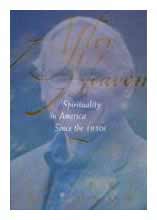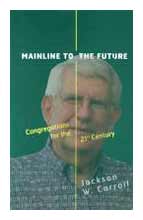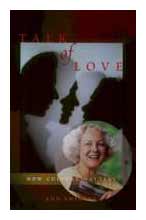In chapter two of their book, “Bridging Divided Worlds“, Jackson Carroll and Wade Clark Roof explore changes in spirituality that have happened in response to unsettled times.
 Drawing heavily on work by Robert Wuthnow in his book, “After Heaven: Spirituality in America since the 1950s
Drawing heavily on work by Robert Wuthnow in his book, “After Heaven: Spirituality in America since the 1950s“, the authors suggest that we have moved from a preference for stability to a preference for exploration.
Spirituality in stable times (read before World War II) was cultivated through habitual practice within the familiar world of one’s particular tradition. In unstable times (read since World War II) seekers explore new vistas and negotiate among alternative systems of belief & practice.
Carroll and Roof unpack what this might mean in the religious scapes of the USA. They describe the end of the hegemony of white Anglo-Saxon male protestant assumptions. Judaism, Catholicism, Evangelicalism and Pentecostalism have taken their place alongside ‘mainstream’ Protestantism. I’ve seen this time and time again in Australia and New Zealand. What once was ‘mainline’ is now ‘sideline’ as independent or more recent Pentecostal movements draw the bulk of emerging generations.
The authors go on, though, to examine the impact of liberalised immigration on pluralism in the USA. The arrival of people from the East (and I’m not talking about East Coast!) has led to a greater awareness of Hinduism, Buddhism, Islam and many other religious movements. Individuals now have the capacity to mix and match – drawing from the wisdom of each movement as they see fit.
More and more, emerging generations are valuing dialogue, respect of the ‘other’, while retaining the capacity to positively assert one’s own point of view. As Carroll and Roof point out, this is more prevalent among people with higher education.
At this point the authors call on the wisdom of Peter Berger, a writer on religious psychology and sociology. Berger points out that the rise of pluralism is associated with the privatisation of religion in which the centre of focus moves to the inner world. Carroll and Roof describe individualistic & humanistic orientations clashing with theistic interpretations of life.
 The third section of this chapter focuses on the process of detraditionalization. This is a topic covered in more detail in Jackson Carroll’s book, “Mainline to the Future: Congregations for the 21st Century“. The authors point out that tradition has not been discarded. It is merely treated in a different way. In the search for meaning, emerging generations are more likely to sift through a number of traditions, holding them up for scrutiny in the light of science, contemporary thinking and popular culture. I would add here scrutiny of individual and shared experience.
The third section of this chapter focuses on the process of detraditionalization. This is a topic covered in more detail in Jackson Carroll’s book, “Mainline to the Future: Congregations for the 21st Century“. The authors point out that tradition has not been discarded. It is merely treated in a different way. In the search for meaning, emerging generations are more likely to sift through a number of traditions, holding them up for scrutiny in the light of science, contemporary thinking and popular culture. I would add here scrutiny of individual and shared experience.
A common thread coming through in the authors’ research is the tension faced in the development of ‘contemporary worship styles’. What is developed today may become old hat within ten years. The authors use the word ‘arbitrary’ to describe the unpredictable way in which Biblical texts are favoured or ignored, and the voices of tradition are respected or shunned. That’s a valid point. At times leaders can lurch from trend to trend without any sense of theological reflection or consistency. But it could also be the reflection of outsiders trying to understand the rhythms of a strange movement.
 Finally, we come back to the paradigm of ‘dwellers and seekers’. Ann Sidler worked with Robert Bellah and others on “The Good Society“, 1992, and “Habits of the Heart: Individualism and Commitment in American Life“, 1996. Here we’re able to benefit from her article in American Sociological Review outlining the concept of culture as a tool kit of symbols, stories, rituals & worldviews which people may use in varying configurations to solve different kinds of problems.
Finally, we come back to the paradigm of ‘dwellers and seekers’. Ann Sidler worked with Robert Bellah and others on “The Good Society“, 1992, and “Habits of the Heart: Individualism and Commitment in American Life“, 1996. Here we’re able to benefit from her article in American Sociological Review outlining the concept of culture as a tool kit of symbols, stories, rituals & worldviews which people may use in varying configurations to solve different kinds of problems.
In settled times, the predominant culture is drawn on by people for constructing broad well-established strategies of action that become traditions that anchor their lives. Inconsistencies are tolerated.
In unsettled times, however, it becomes obvious that the inconsistencies reveal the inadequacy of previously accepted strategies of action. Entrepreneurial leaders draw again from the cultural toolkit to develop new meaning systems, cultural styles and strategies of action.
Which brings us the nub of “Bridging Divided Worlds”. The development of new cultural forms in unsettled times is emotionally charged. Conflict is inevitable as those who seek to create cultural forms clash with those who have no desire to leave behind the certainties of the previously accepted paradigm.
The Chambers Online Dictionary defines “hybrid” as
noun
1 an animal or plant produced by crossing two different species, varieties, races or breeds; a mongrel.
2 linguistics a word whose elements are taken from different languages, eg bicycle.
3 anything produced by combining elements from different sources.adj
being produced by combining elements from different sources; mongrel. hybridism or hybridity noun .ETYMOLOGY: 17c: from Latin hibrida the offspring of a tame sow and wild boar.
So that’s what we’re seeing here with the development of pluralism, individualism and posttraditionalism. Each person developing within themselves, and with others, their own assortment of resources from the cultural tool kit.
Robert Wuthnow – After Heaven: Spirituality in America since the 1950s, 2000
Jackson Carroll – Mainline to the Future: Congregations for the 21st Century, 2000
Ann Sidler – Talk of Love: How Culture Matters, 2003
